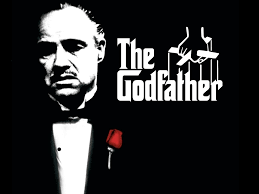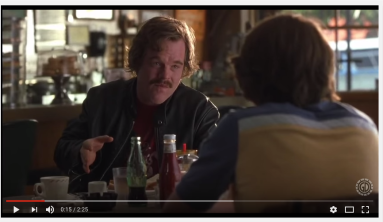
My Dad spent decades in the US Air Force collecting and communicating US military intelligence. His communication style had a lot of influence over me. Now, before the oxymoron digs start flying, let me tell you, folks who deal in military intelligence have impressive communication skills. Which, to my eye, is evidence of impressive intelligence.
Here’s what my father’s communication style taught me.
The best communications are:
1. Brief
“No chatter in cockpit,” I’ve heard Dad say (he flew B52s in the 60s).
When you’re at 30,000 feet and your starboard wingtip is 6 feet from Soviet airspace, or refueling in midair at 500 MPH by connecting with another aircraft flying 50 feet above you, (in wartime, in a storm, above the middle of the Pacific) the only thing that should ever come out of your mouth is relevant, useful information. I’ll talk more about relevance in a bit. The point here is to recognize the superfluous and kill it. Resist the temptation to speak in metaphors, add context or color, frame and re-frame and re-frame and then re-frame again (like we marketers just love to do).
Just the facts, Jack — that’s what Dad taught me. Who knew that one day I would grow up to write for this crazy thing called the Internet where every syllable — indeed every pixel counts? Dad’s minimalist style comes in handy when creating web content.
2. Strong
Here’s an example I like of brief, but strong. When the request came in (after it was decoded, of course): ENEMY AGENT COMING TO OUR SIDE. CAN YOU RETRIEVE @ 8°39′ N 16°51′ E OCT 2 13:00? Dad pulled out his charts and looked up the coordinates (somewhere in Africa — yes, the Cold War was fought on every grain of sand on this planet), made a flight plan, checked his watch, and responded with these two syllables: “CAN DO”.
What I like about this example is that while YES would have been fewer syllables, CAN DO is more affirmative. It gives the requester more confidence that his needs will be met. YES leaves a little room for interpretation … was that a YES with a heavy sigh? Was that a resentful YES? CAN DO just doesn’t have those problems.
3. Data Driven
We marketers don’t know from big data. The Military has the big data thing down. I would argue that militaries live, eat, and breathe little else. Can’t fight a war with out some serious big data. They certainly do not make decisions without first looking at data backwards and forward and upside down. Positions, velocities, ETAs, success probabilities, supply chain logistics, forecasting scenarios — and by the way, you have to have all of this data on your competi — I mean enemy, too, if you’re the military.
So when I was about 14 and asked Dad if he would buy me these awesome shoes I saw that afternoon at the mall and was going to positively die without, silently, Dad rose from his chair, walked into my room, opened the closet and began counting shoes. “One, two, three, four, five … eleven, twelve, thirteen. No, I will not buy you a new pair of shoes.”
Sort of leaves a poor girl without a leg to stand on, yes? Backing up your point of view with a bit of data is pretty compelling. Dad’s data was so good, he could even skip crafting a point of view altogether — he just let the data speak for itself. But then again, that was his brief style.
4. Relevant
Relevant communication means giving the right information at the right time. Here’s what happened one night at the dinner table after my sister discovered the Beatles. Seventeen at the time, she began to wax on about their pure genius, about how they elevated popular music and made it so supremely more sophisticated. As she satisfyingly chewed her pork chop with the full confidence that she’d delivered a brilliant argument for her point of view, Dad picked up his plate, walked into the kitchen and tunelessly began to sing “Why don’t we do-do it in the road?”
Over the sound of the water faucet, the clanking of dishes being loaded, “Why don’t we do-do it in the road… no one will be watching us, why-y don’t we do it in the road?”
Then, twisting the knife just a tad, In falsetto: “Why don’t we do it in the road?”
Brief, strong, data-driven and relevant, that’s Dad. Okay, also a flare for humor and dramatic impact. But isn’t it marvelous how he fit all that, too, into such pithy little sound bites? It was like I had someone training me how to communicate as a digital marketer all my life and didn’t know till they invented the Internet.
Happy Father’s Day, Dad! Thanks for the stories!

 For more about my POV on content strategy, check out this CMS Wire interview with
For more about my POV on content strategy, check out this CMS Wire interview with 






 Just wrapped an intense but very exciting project with Lithium—the release of a new survey in partnership with the CMO Council of both consumers and marketers on their use of social media. Findings analysis, a full white paper, an infograph and a webcast—whew! It was a full sprint all the way, but I admit that’s what I love about social media marketing. It’s a fast moving train.
Just wrapped an intense but very exciting project with Lithium—the release of a new survey in partnership with the CMO Council of both consumers and marketers on their use of social media. Findings analysis, a full white paper, an infograph and a webcast—whew! It was a full sprint all the way, but I admit that’s what I love about social media marketing. It’s a fast moving train. Last fall, it was data-driven marketing I declared as the new black when I cited a recent NYT article glamorizing what had traditionally been the realm of geeky good with numbers types (like, ahem, yours truly). Data-driven marketers, it said, are a hot new business persona that looks something like Madison Ave. meets Wall Street: Don Draper meets Gordon Gecko. At last! Those who actually enjoy manipulating spreadsheets, know the difference between a mean and a median, love to talk about outliers and statistical confidence, experimental design and hypothesis-driven adaptive strategies could come out. “Hi my name is Bonnie and I’m a dataholoic,” I could finally admit—and become fashionable!
Last fall, it was data-driven marketing I declared as the new black when I cited a recent NYT article glamorizing what had traditionally been the realm of geeky good with numbers types (like, ahem, yours truly). Data-driven marketers, it said, are a hot new business persona that looks something like Madison Ave. meets Wall Street: Don Draper meets Gordon Gecko. At last! Those who actually enjoy manipulating spreadsheets, know the difference between a mean and a median, love to talk about outliers and statistical confidence, experimental design and hypothesis-driven adaptive strategies could come out. “Hi my name is Bonnie and I’m a dataholoic,” I could finally admit—and become fashionable!
You must be logged in to post a comment.